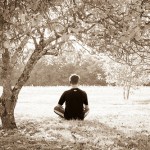 In order to become a more responsible global citizen, I need to organize my thoughts and feelings. Over the last couple weeks the infinitely long list of things I could do, change, get involved in, or study has started to sort itself into three broad categories: wisdom, compassion, and action.
In order to become a more responsible global citizen, I need to organize my thoughts and feelings. Over the last couple weeks the infinitely long list of things I could do, change, get involved in, or study has started to sort itself into three broad categories: wisdom, compassion, and action.
In my tradition of Zen,all three of these areas of human experience are considered essential to the bodhisattva way of life. (Forgive me if I share a fair amount of Zen imagery in this post, it’s just part of the way I am processing all of this.) Bodhisattvas work for the welfare of all beings. They cultivate wisdom though meditation and other practices, but they don’t stop there. They alleviate their own suffering through insight and renunciation, but then they are compelled to respond to the suffering of others. And they don’t just sit around feeling compassionate – they do something. We are all invited to be bodhisattvas, and if we neglect any one of the three essential aspects – wisdom, compassion, or action – our efforts to work for the welfare of beings, ourselves included, will be compromised.
I like organizing my practices of social engagement into these three categories because it is very easy to get pulled into just one or two of them and forget about the others. For example, I have spent the better part of the last 20 years cultivating wisdom. The practice of wisdom is not primarily about gathering knowledge, although that can be part of it. It is mostly about “spiritual” wisdom, although that term can end up creating too much of a separation between our everyday experience and the reality we come to taste. In Zen, this wisdom is a deep, experiential understanding about the nature of reality – particularly the empty and interdependent nature of things, including the self. In other traditions it might be developing a personal relationship with God, or learning to coordinate mind and body, or finding a way to be at peace with your life. The common theme no matter your tradition or practice is seeing beneath appearances and being less tossed around by conditions.
Those of us who have gone deeply into the practice of wisdom sometimes fall into a trap. I confess that, having found a measure of unconditional peace and joy in my life, it was easy to rest there. It was tempting to see wisdom practices as the answer to everything. If I suffer, I’ll just meditate or let go. If someone else suffers, I can teach them how to meditate and let go. Then we can all have peace no matter what’s going on. Voila! All problems solved.
But then we have the two other aspects of practice to address. In Zen, compassion is portrayed by the archetypal image of the bodhisattva Kanzeon, or Avalokitseshvara (pictured above). Her name can be translated as “the one who perceives the cries of the world.” Iconographically, the bodhisattva is sometimes portrayed as having a thousand arms and twelve heads. The heads allow her to see in every direction, and to top it all off she often has an eye in the palm of each hand. Many of her hands hold various tools, and it is said Kanzeon uses them to respond naturally and automatically to every request. Basically, Kanzeon is listening and watching in order to perceive and respond to every suffering being in the universe – just as the Christian God notices every sparrow that falls.
This model of compassion invites me to incorporate witnessing the suffering of all beings as an essential part of my practice. And Kanzeon actively listens. She really wants to know, really wants to see and hear. She’s not just sitting in some remote place on her meditation cushion, waiting to notice something that arouses compassion.
Buddhist practice in particular, I think, can lead to an erroneous assumption that all we need to do is practice wholeheartedly in or with “our daily life.” That is, that’s all we need to worry about is whatever happens to come across our path in the course of our normal activities. This erroneous assumption arises from the very real and true fact that at any moment our life is only here and now; if we can’t manifest compassion for the person right in front of us, we’re not manifesting true compassion for all those abstract suffering beings “out there.” There is no real and fixed separation between “here” and “out there” – we simply create a division in our minds, so in a sense, the whole universe is right here.
However, when I feel content to focus on what’s right in front of me because that’s all I’m responsible for, or because “right in front of me” is essentially not separate from the places where people are suffering acutely from war or poverty, I am also creating a division in my mind between “here” and “out there.” I’m simply dividing the two and then equating them. That is very different from letting go of any idea of boundaries around “my life” or what my experience is right here, right now. If I let go of ideas and boundaries, then the reports I read in the news are right here, right now. The people sleeping on the streets in my city, and all cities, are my life. I don’t have to dwell on what’s going on “out there;” once I perceive the cry, once compassion is aroused, it is all my life. I could go on… but I’ll explore more about this later.
Finally, there’s action. Loving action is portrayed by the archetypal image of the bodhisattva Samantabhadra, usually depicted as riding on an elephant. In his book Faces of Compassion: Classic Bodhisattva Archetypes and Their Modern Expression, Taigen Dan Leighton writes, “Samantabhadra riding majestically on his slow mount has a feeling of calm, deliberate activity, imbued with clear, considered intention and dignity.” (Heck, this is the kind of activist I want to be!)
While Kanzeon is associated with compassionate response, Samantabhadra is portrayed as more proactive and ambitious. Kanzeon would perceive the cries of a child and pick him up to comfort him, while Samantabhadra might make sure the child gets good grades in school and has enough money to attend college. Kanzeon might listen carefully to a group of people suffering from the effects of racism, making sure she really heard them, and by so doing might even provide healing for everyone involved. In response to the same need, Samantabhadra might arrange rallies or propose legislation to address the underlying issues.
This is not to say everyone aspiring to be a good global citizen, bodhisattva, or generous person needs to become what is typically thought of as an “activist.” Rather, the necessity of action can be applied anywhere. Expanding my awareness of global issues is action. Deliberately doing things to expose myself to the suffering of others is action. Signing up for a meditation retreat is action. Picking up the phone and calling a sick friend is action. Writing this blog is action. Essentially, it’s embodying, enacting, and fulfilling my wisdom and compassion. This enactment keeps things from just being in my head, or even just in my heart. It deepens my wisdom and compassion even as it is informed by them. And, of course, it has the potential to actually benefit the world.
Still, even though many kinds of activities can be categorized as “loving action,” I don’t want to congratulate myself too quickly. The bodhisattva keeps working until all beings are free from suffering, and takes a vow acknowledging that beings are infinite in number. So, basically, the work never ends. Wisdom gives us the space and strength to open ourselves up; in opening up we perceive suffering and our compassion is aroused; in connecting with our compassion we have to respond; in enacting our compassion we encounter more suffering and have to learn to listen more carefully, lest we lose touch with what is needed; in our efforts to act effectively, we have to deepen our wisdom… and on and on. Thus we continue to deepen our wisdom, compassion, and action in a sustainable way, not in a way that aggrandizes the virtue and accomplishments of self.
What a lovely vision, eh? Well, it certainly inspires me. When you look at the things you do in your life to benefit yourself and the world, does it help at all to categorize them as practices of wisdom, compassion, and action?













